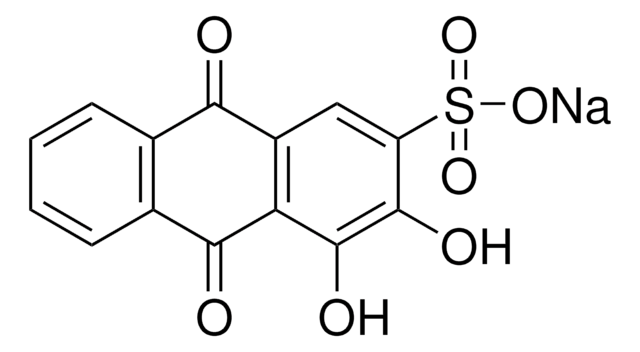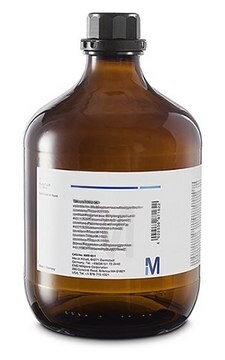8.40008
1-Cetylpyridinium chloride monohydrate
for synthesis
Synonim(y):
1-Cetylpyridinium chloride monohydrate, N-Hexadecylpyridinium chloride, 1-Hexadecylpyridinium chloride monohydrate
About This Item
Polecane produkty
Poziom jakości
Formularz
solid
pH
5.0-5.4 (20 °C, 10 g/L in H2O)
mp
80-84 °C
gęstość nasypowa
370 kg/m3
temp. przechowywania
2-30°C
ciąg SMILES
[Cl-].[n]1(cc[c+H]cc1)CCCCCCCCCCCCCCCC.O
InChI
1S/C21H38N.ClH.H2O/c1-2-3-4-5-6-7-8-9-10-11-12-13-14-16-19-22-20-17-15-18-21-22;;/h15,17-18,20-21H,2-14,16,19H2,1H3;1H;1H2/q+1;;/p-1
Klucz InChI
NFCRBQADEGXVDL-UHFFFAOYSA-M
Zastosowanie
- Reduction of bacterial contamination in meat processing: Cetylpyridinium chloride was used as an antimicrobial agent on beef hides, demonstrating significant effectiveness in reducing bacterial contamination, which is crucial for food safety in meat processing industries (Baird et al., 2006).
- Antibacterial effects in dental materials: The dentin primer containing cetylpyridinium chloride in Clearfil Protect Bond showed notable antibacterial effects against oral pathogens, suggesting its potential use in enhancing the antimicrobial properties of dental restorative materials (Imazato et al., 2006).
- Antimicrobial activity on frankfurters: Cetylpyridinium chloride was effective in controlling Listeria monocytogenes on frankfurters, highlighting its role in improving food safety and extending shelf life in processed meat products (Singh et al., 2005).
- Chemical treatment of periodontally involved root surfaces: A study utilized cetylpyridinium chloride in a chemical treatment modality for periodontally involved human root surfaces, illustrating its effectiveness in root surface preparation for dental procedures (Okte and Bal, 2000).
Komentarz do analizy
Water (K. F.): 4.5 - 5.5 %
Identity (IR): passes test
Hasło ostrzegawcze
Danger
Zwroty wskazujące rodzaj zagrożenia
Zwroty wskazujące środki ostrożności
Klasyfikacja zagrożeń
Acute Tox. 2 Inhalation - Acute Tox. 4 Oral - Aquatic Acute 1 - Eye Dam. 1 - Skin Irrit. 2 - STOT SE 3
Organy docelowe
Respiratory system
Kod klasy składowania
6.1A - Combustible, acute toxic Cat. 1 and 2 / very toxic hazardous materials
Klasa zagrożenia wodnego (WGK)
WGK 3
Temperatura zapłonu (°F)
Not applicable
Temperatura zapłonu (°C)
Not applicable
Certyfikaty analizy (CoA)
Poszukaj Certyfikaty analizy (CoA), wpisując numer partii/serii produktów. Numery serii i partii można znaleźć na etykiecie produktu po słowach „seria” lub „partia”.
Masz już ten produkt?
Dokumenty związane z niedawno zakupionymi produktami zostały zamieszczone w Bibliotece dokumentów.
Nasz zespół naukowców ma doświadczenie we wszystkich obszarach badań, w tym w naukach przyrodniczych, materiałoznawstwie, syntezie chemicznej, chromatografii, analityce i wielu innych dziedzinach.
Skontaktuj się z zespołem ds. pomocy technicznej


![Diwodzian nitroprusydku sodu [disodium pentacyanonitrosyl ferrate(III) dihydrate] GR for analysis ACS,Reag. Ph Eur](/deepweb/assets/sigmaaldrich/product/images/350/751/c4f466f3-0750-4cb4-af8f-5942eba5d12f/640/c4f466f3-0750-4cb4-af8f-5942eba5d12f.jpg)




